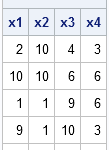
Managing expectations for forecast accuracy is very important, as often those expectations are extreme after management invests in a new system. Software vendors have also been known to make overly (choose one: optimistic? sanguine? idyllic?) accuracy claims as part of their sales pitch. Of course, there is no arbitrary level of accuracy


































